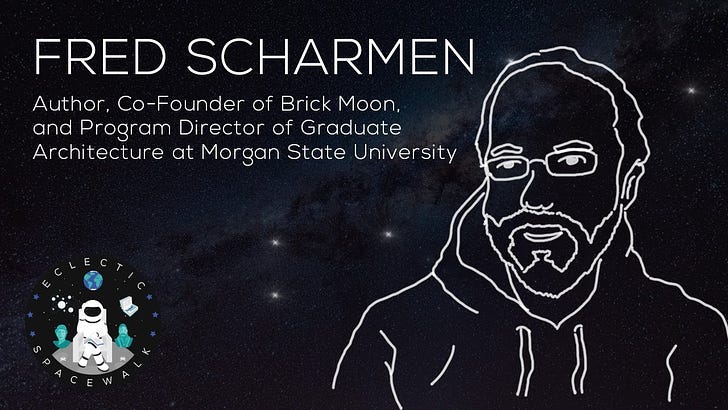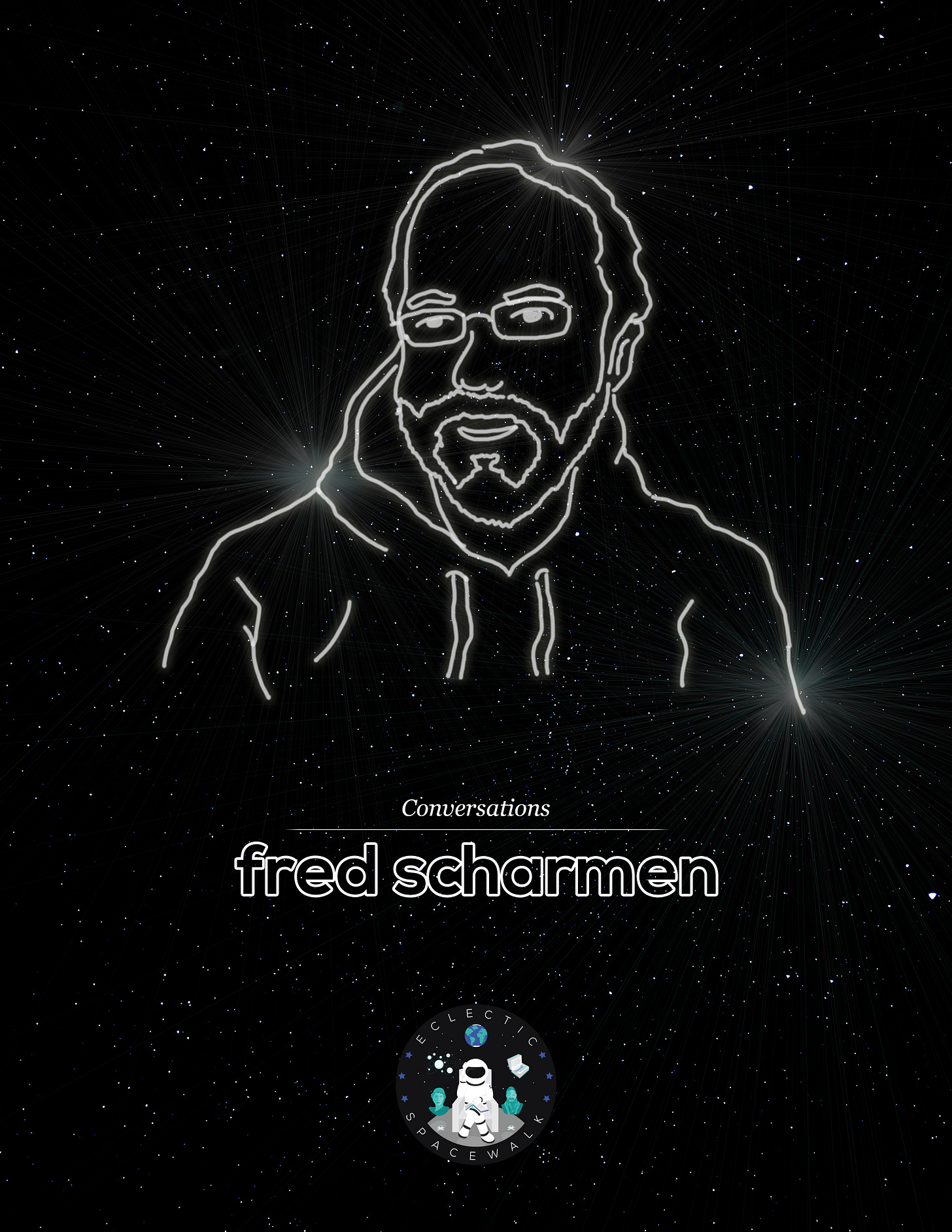A conversation with Author, Co-Founder of Brick Moon Space, and Program Director of Graduate Architecture at Morgan State University, Fred Scharmen—
Audio:
Video:
Hello Eclectic Spacewalkers,
Last month we had the pleasure of speaking with Fred Scharmen. Fred is a designer and researcher in the history and theory of space architecture.
He is an associate professor and Program Director of Graduate Architecture in the Department of Graduate Built Environment Studies as part of the School of Architecture and Planning at Morgan State University.
He is also the author of ‘Space Forces: A Critical History of Life in Outer Space’, the creator of The Working Group on Adaptive Systems, and the Co-Founder of BrickMoon Space.
“We try to change systems, we try to design systems from the ground up; systems also change us and co-design.”
Timestamps:
00:00 - Start
01:30 - What were you first curious about?
10: 25 - Epistemic Activism
15:15 - Director of Graduate Architecture at a historically black college
25:00 - The Working Group on Adaptive Systems
40:50 - Space Forces: A Critical History of Life in Outer Space
57:10 - ‘Space Codes: The Astronaut and the Architect’
01:01: - Brick Moon Space
01:11:55 - Offering a critical perspective of the Overview Effect
“Spaces make cultures and cultures make spaces.”
Our conversation was wide-ranging about design, space architecture, speculative futures, and bringing a critical perspective to the Overview Effect.
We thank Fred for their time, research, and eclectic mind. Enjoy the conversation, and until next time - Ad Astra!
—
Space Forces: A Critical History of Life in Outer Space
“The radical history of space exploration from the Russian Cosmists to Elon Musk
Many societies have imagined going to live in space. What they want to do once they get up there—whether conquering the unknown, establishing space “colonies,” privatising the moon’s resources—reveals more than expected. In this fascinating radical history of space exploration, Fred Scharmen shows that often science and fiction have combined in the imagined dreams of life in outer space, but these visions have real implications for life back on earth.
For the Russian Cosmists of the 1890s space was a place to pursue human perfection away from the Earth. For others, such as Wernher Von Braun, it was an engineering task that combined, in the Space Race, the Cold War, and during World War II, with destructive geopolitics. Arthur C. Clarke, in his speculative books, offered an alternative vision of wonder that is indifferent to human interaction. Meanwhile NASA planned and managed the space station like an earthbound corporation. Today, the market has arrived into outer space and exploration is the plaything of superrich technology billionaires, who plan to privatise the mineral wealth for themselves. Are other worlds really possible?
Bringing these figures and ideas together reveals a completely different story of our relationship with outer space, as well as the dangers of our current direction of extractive capitalism and colonisation.”
—
The Working Group on Adaptive Systems
“The Working Group on Adaptive Systems is an art, design, and research consultancy based in Baltimore, Maryland. We are interested in cities, spaces, people, & the things that connect them to each other and to the larger world.”
the Nonhuman Autonomous Space Agency
Evergreen Commons
Mapping & Masterplanning”
—
Brick Moon means better space habitats.
“We use insights from data - not anecdotes - to improve productivity, reduce costs, and support crew well-being.
In 1869, the writer Edward Everett Hale described a self-contained space habitat for the first time in his classic story, "The Brick Moon."
Inspired by Hale's vision, Brick Moon LLC is a consultancy led by three experts in habitat design and use. We've performed ground-breaking research, including on the International Space Station, that reveals how people actually live in space. This work has been featured by CNN, NPR, NBC News, CBC Radio, Scientific American, Popular Science, Space.com, and many other media outlets. Our unique perspective, grounded in the social sciences and architectural design, allows you to ask different kinds of questions about your desired habitats and get useful answers.
Our goal is to help you create orbital or planetary habitats that improve productivity, reduce costs, and support crew well-being. We move you beyond anecdotes and guesswork, to reach data-driven insights learned from the reality of space habitat operations. Our services include feedback in response to existing habitats or plans for new ones, the identification of overlooked issues in spacecraft design, and education for designers and mission planners.”
More on Fred Scharmen:
Twitter - https://twitter.com/sevensixfive
Space Forces - https://www.versobooks.com/books/3889-space-forces
The Working Group on Adaptive Systems: - https://w-as.net/
Brick Moon Twitter: https://twitter.com/BrickMoonSpace
Brick Moon Website - Brickmoonspace.com
More on Eclectic Spacewalk:
Subscribe to Substack Newsletter
Listen to all podcasts on Anchor




